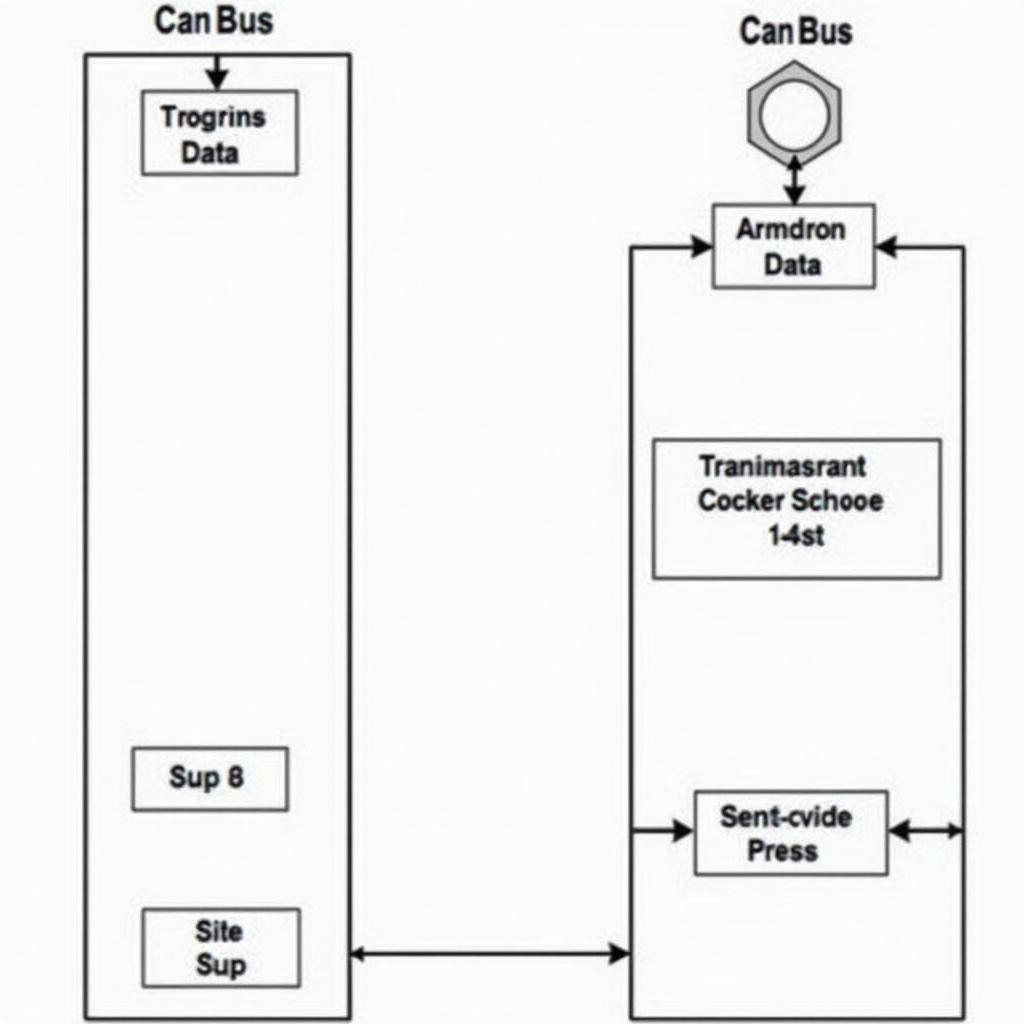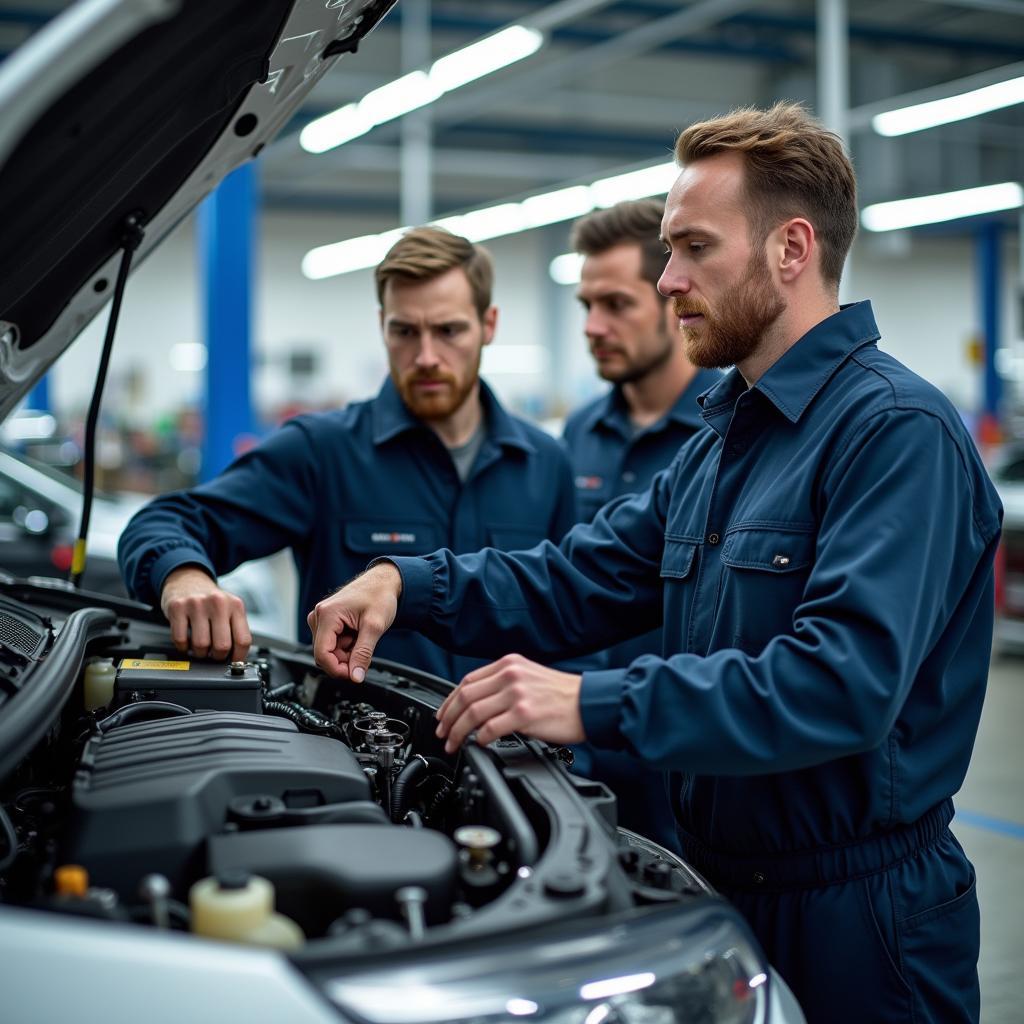The CAN Bus, the central nervous system of your car, enables communication between the various control units. But what happens when multiple devices want to send data simultaneously? This is where CAN Bus arbitration comes into play. This article explains everything you need to know about this important process, from how it works to its benefits for vehicle diagnostics.
What is CAN Bus Arbitration?
Arbitration in the CAN Bus is a process that resolves conflicts when multiple control units want to send data simultaneously. Simply put, it works like an auction where the device with the highest priority wins. This priority is determined by the Identifier (IDs) of the messages. The lower the ID, the higher the priority. Imagine several mechanics wanting to talk to you at the same time. The one with the most urgent message will make themselves heard first.
 Diagram illustrating the CAN Bus arbitration process
Diagram illustrating the CAN Bus arbitration process
How Does CAN Bus Arbitration Technically Work?
Technically speaking, arbitration occurs bit by bit during the message transmission. Each control unit monitors the bus and compares the transmitted ID with its own. As soon as a bit is different, the device with the higher ID (i.e., the lower bit value) yields. This process happens fully automatically and in real time, ensuring smooth communication in the vehicle network. “CAN Bus arbitration is a masterpiece of technology,” says Dr. Hans Müller, author of the book “Modern Vehicle Communication.” “It enables efficient and reliable data transfer, even in complex networks.”
Benefits of CAN Bus Arbitration for Vehicle Diagnostics
CAN Bus arbitration also plays an important role in vehicle diagnostics. By analyzing the data traffic on the bus, faults can be identified and resolved. Modern diagnostic tools allow monitoring the communication between control units to find the root cause of problems. This saves time and costs during troubleshooting.
Common Problems and Solutions Related to CAN Bus Arbitration
Problems with CAN Bus arbitration can lead to communication disruptions in the vehicle. Possible causes include faulty control units, broken wires, or short circuits. In such cases, professional diagnostics are essential.
Questions and Answers About CAN Bus Arbitration
- What is the difference between CAN High and CAN Low? CAN High and CAN Low are the two signal wires of the CAN Bus. The difference between the two voltages represents the data.
- How can I detect faults in the CAN Bus? With a diagnostic tool, you can monitor the data traffic on the CAN Bus and read out fault codes.
Related Topics
- OBD Diagnostics
- Vehicle Communication
- Control Unit Programming
Do You Need Help with Vehicle Diagnostics?
At autorepairaid.com, we offer professional support for all your vehicle technology questions. Contact us now for a free consultation! Our experts are available 24/7.
 Photo of the autorepairaid.com expert team
Photo of the autorepairaid.com expert team
Conclusion
CAN Bus arbitration is an essential component of modern vehicles. It enables efficient and reliable communication between control units. An understanding of this process is therefore essential for anyone involved in vehicle technology. Do you still have questions? Feel free to leave us a comment! Also, visit our other articles on autorepairaid.com for more information about car repair.
